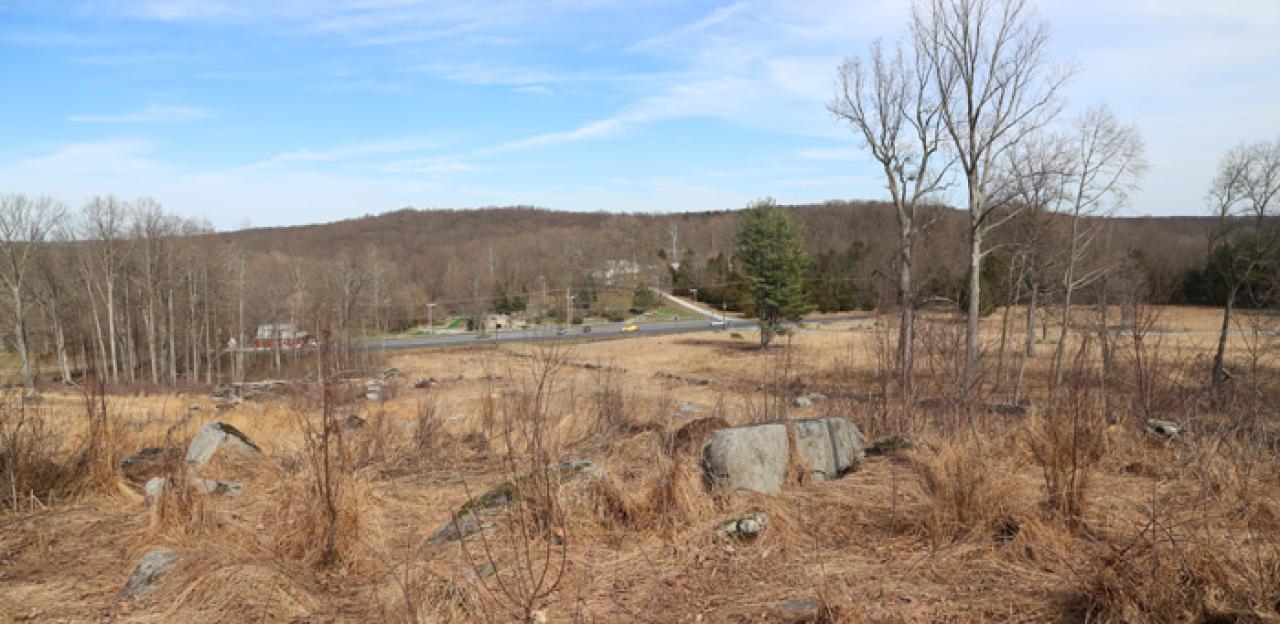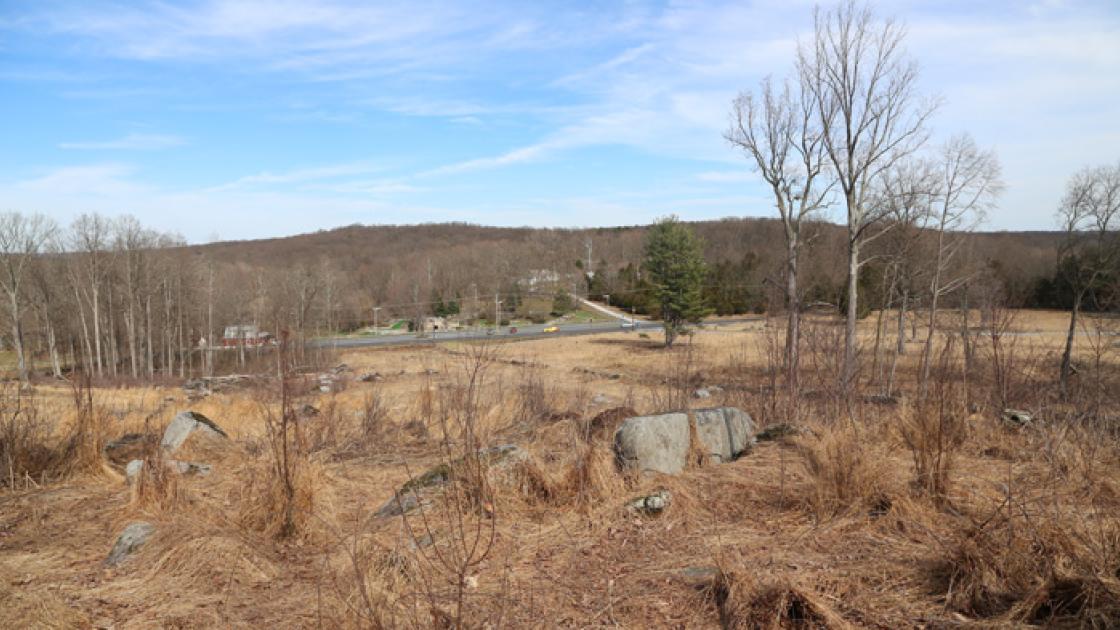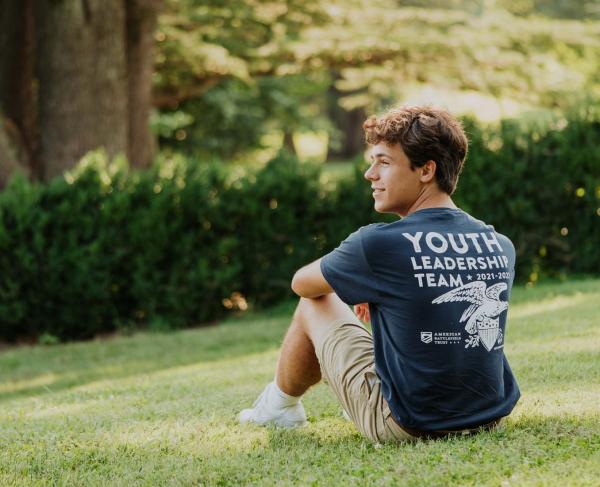Culp's Hill and the Gettysburg Battlefield: Then & Now

In 2010, the Civil War Trust successfully preserved five acres on Power's Hill, the "Forgotten Hill" of the Gettysburg battlefield. In this interview, we had the chance to talk with Gettysburg Licensed Battlefield Guide and Culp's Hill expert Charlie Fennell about the historical importance of the fight for Culp's Hill and Spangler's Spring during the Battle of Gettysburg.
Civil War Trust: The fighting on the Union right around Culp’s Hill has been overshadowed in recent decades by that which occurred on the Union left and center. Why do you think this has happened?
Charlie Fennell: Culp's Hill is still the least visited and under interpreted major part of the battlefield at Gettysburg. The action on the Union left at Little Round Top greatly overshadows the fighting on Culp's Hill and one of the main reasons is the view from Little Round Top is more spectacular. You cannot see off of Culp's Hill unless you climb the tower.
Set the stage for us: Who is facing whom and why are they facing each other near Culp’s Hill?
CF: Culp's Hill is the only hill on the battlefield that was attacked in some way shape or form on all three days of the battle. The forces that were mostly involved in the fighting there were Johnson's Confederate division (Stonewall Jackson's former command) and Union troops of the 12th Army Corps under the command of Major General Henry W. Slocum.
The Southerners attacked Culp’s Hill on the evening of July 2nd. How well defended was the hill and what were the implications of fighting at night?
CF: On July 2nd most Union forces defending the hill were ordered to go to support the Union left which was at the time being driven in by Longstreet's assault. The Confederate forces noticed the Union forces leaving and attacked as per Lee's instructions. 1,424 Union defenders remained on Culp's Hill and nearly 5,000 Confederates were coming to take the hill from them. At no other time during the battle did the Confederates have such a numerical advantage over Union forces as they did on Culp's Hill on July 2nd, even on July 1st when they outnumbered Union forces. Thus it could be argued that the attack on Culp's Hill represented the best chance for Confederate victory. It was certainly the only place during the entire battle that the Confederate forces violated the Union fish hook defense and held onto ground on the main Union defensive line.
What are some of the prominent myths concerning Culp's Hill and Spangler's Spring? Are they true?
CF: Several myths concerning the Spangler's Spring are and Culp's Hill persist to this day. The soldiers did not knowingly share water there during the battle and Culp's Hill would not have been easy to capture on July 1st. Also Ewell was not ordered to attack simultaneously with Longstreet on July 2nd but to make a simultaneous demonstration to be converted into a real attack should the opportunity present itself which Ewell did.
The fighting on and below Culp’s Hill continued for seven hours on the morning of July 3rd—the most sustained fighting at Gettysburg. Describe the character of the fight.
CF: On July 3rd the battle begins at Culp's Hill in which over 22,000 Americans fought for seven hours of sustained close combat as the fate of the country hung in the balance. It is safe to say that over one-fifth of all the lead fired during the battle, well over a million rounds, was fired on Culp's Hill on July 3rd. As one Union soldier remembered, "The whole hillside seemed enveloped in a blaze. Minnie balls pattered upon the breastworks like hailstones on a housetop. Solid shot went crashing through the woods, adding the danger from falling limbs of trees to that from erratic fragments of exploding shells. The whole hill was covered with the smoke and smell of powder. No enemy could be seen. To expose oneself above the breastworks was certain death." When the battle ended a little before noon the Confederates were forced to give up ground that they had controlled for the first time in the battle.
Why was the capture of Culp’s Hill so important for the Southerners to capture and for the Yankees to retain?
CF: The fight for Culp's Hill was significant because it guarded the main Union supply line on the Baltimore Pike and the rear of the Union army on Cemetery Ridge.
What role did Power’s Hill play in the struggle for Spangler’s Meadow?
CF: One of the more significant terrain features which is forgotten today and had a huge impact on the outcome was Power's Hill. Artillery fire form this hill contained the Confederate forces in Spangler's Meadow and force them to attack the Union position head-on. As the Park Service takes down trees in the Spangler's Meadow area visitors will begin to better appreciate the importance of Powers Hill in the battle. It is therefore essential for a true understanding of the Battle of Gettysburg that Power's Hill be preserved and restored to its 1863 appearance.
Artillery aside, what else happened around Power’s Hill?
CF: In addition to being a very important artillery position it was also Slocum's Headquarters and one of the places that General Meade went to escape the artillery fire preceding Pickett's Charge.
How well preserved is the area around Culp’s Hill and Power’s Hill?
CF: All things considered the Culp's Hill and Spangler's Spring areas are fairly well preserved but the ground along the Baltimore Pike including Power's Hill is not. In fact, in order to get to one of the monuments you have to cross private ground.

UPDATE: With the 2010 acquisition of five acres on Power's Hill (which have since been turned over to the National Park Service) the Civil War Trust made these monuments more easily accessible to the public.
Learn More: Culp's Hill
Dr. Charles Fennell is a longtime licensed battlefield guide at Gettysburg, specializing in the actions around Culp's Hill on which subject he wrote his doctoral dissertation. He is an instructor at a Harrisburg Area Community College and lives with his family in Hanover, Pennsylvania.
Related Battles
23,049
28,063


